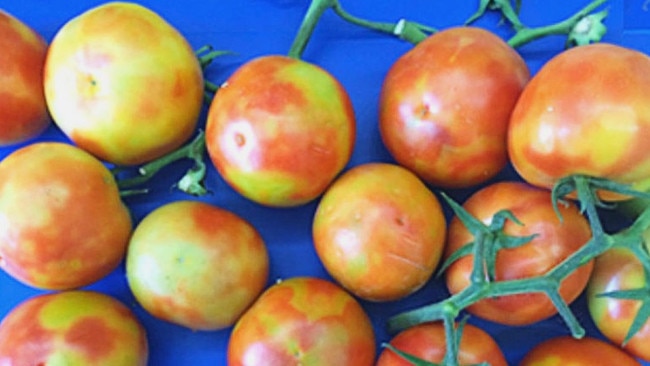The costly impact of Victoria's tomato virus detection
The costly impact of a noted horticultural virus is hitting a Victorian glasshouse, highlighting the importance of biosecurity for the sector.
Questions remain unanswered over a damaging horticultural virus – which has cost at least 120 people their jobs – that was brought in from South Australia to Victoria earlier this year.
Last month, tomato brown rugose fruit virus was detected at a tomato glasshouse facility in Victoria’s Goulburn Valley, following movement of tomato seedlings without authorisation from either the South Australian government or Agriculture Victoria, from a South Australian decontaminated production nursery into Victoria in late 2024.
The virus was detected in South Australia in August 2024, and has been detected at three properties in South Australia.
Quarantine controls have been put in place at Katunga Fresh in the state’s northeast, resulting in at least 120 workers indefinitely stood down, with the facility temporarily closed.
The virus has potential to reduce yields of tomato, capsicum, and chilli crops by up to 70 per cent.
The Weekly Times asked Agriculture Victoria what was the nature of the unauthorised movement of seedlings from South Australia to Victoria, along with what potential penalties could be issued as a result.
A department spokesperson said movement of ToBRFV host material from infected properties into Victoria was prohibited, “unless a permit is issued by Agriculture Victoria”.
Victorian Farmers Federation president Brett Hosking said biosecurity and the protection of farming businesses was “of paramount importance and any threat must be acted upon swiftly”.
The SA government, along with the federal government, has launched a $5m response plan, encompassing tracing testing and surveillance, removal of host plants and decontamination, and eradication and proof of freedom activities until 2026.
Last year, the Victorian government passed the Biosecurity Legislation Amendment (Incident Response) Act 2024, increasing fines for not following biosecurity and traceability requirements during an emergency response.
An AUSVEG spokesperson said the Victorian detection has had a “major impact” on affected growers.
“As part of the national response AUSVEG is continuing to engage with the relevant biosecurity agencies, who advise there is no evidence of ToBRFV in any other Victorian location, and that risk has been further mitigated due to the source of this detection being known,” the spokesperson said.

“Ensuring there is ongoing biosecurity funding to support robust biosecurity responses and on-the-ground practice remain key priorities for AUSVEG, to ensure continuity of business and trade, and to protect growers.”





